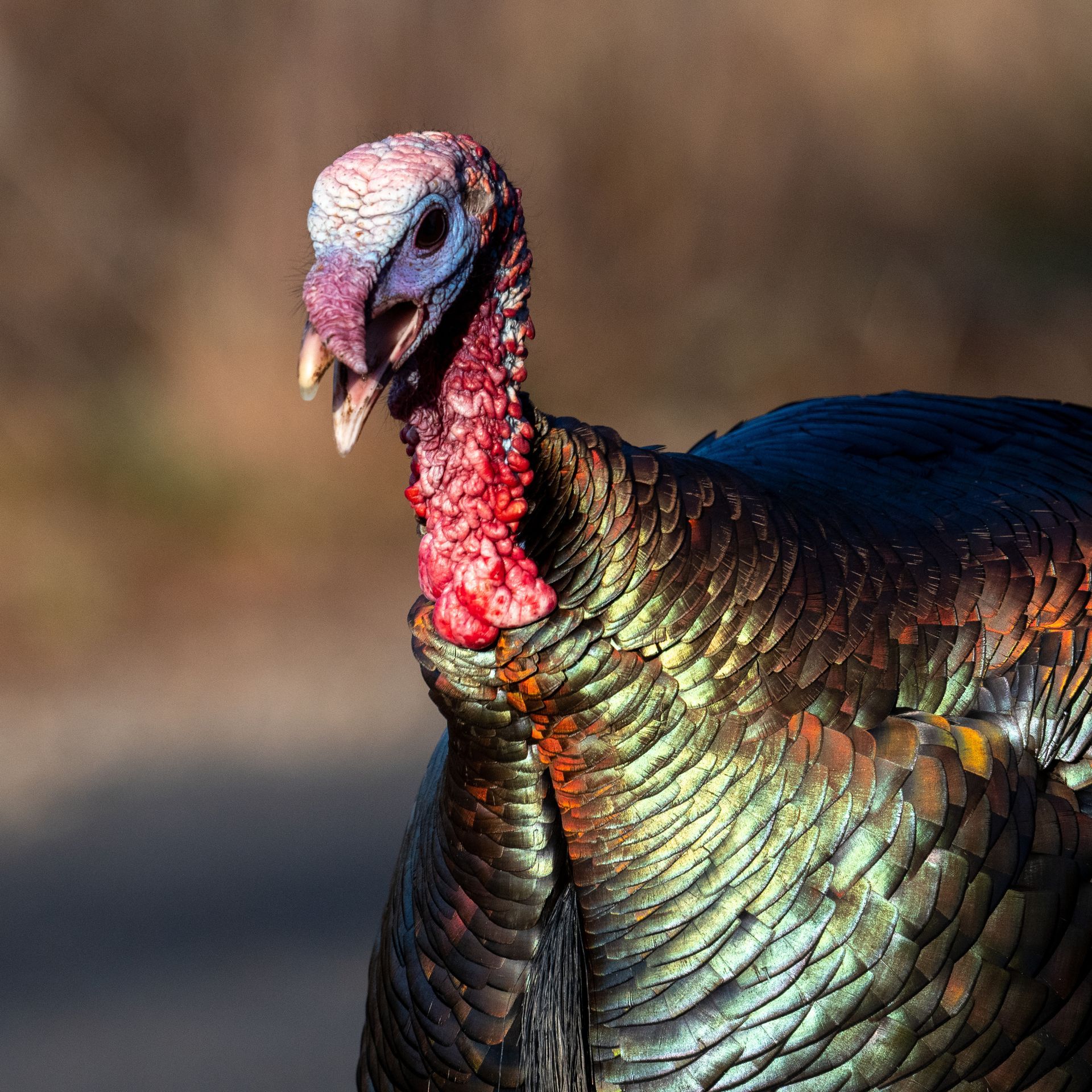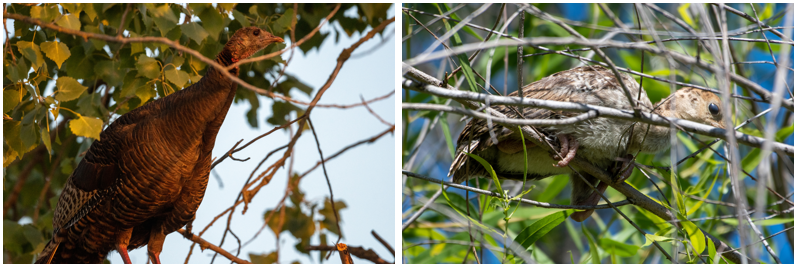Tuleyome's Science Corner - Wild Turkeys in California

Male wild turkey by Jonathan Eisen
Like many urban areas in California, my neighborhood in Sacramento is home to a flock of wild turkeys (Meleagris gallopavo). I often see them foraging for insects and seeds in front yards, roosting in trees in the park, or even walking around on people’s roofs. I’ve always been struck by the beauty of their plumage – ranging from striking banding on their wings and tails to incredibly iridescent feathers around the breast. Their heads, particularly those of the males, do leave something to be desired aesthetically, at least from a human perspective.
Unlike turkey vultures, who have bald heads for sanitary reasons, male wild turkeys have bald heads primarily as an aid for courtship. The combination of bright red and blue colors, along with fleshy protrusions above their beaks (the snood) and along the neck (caruncles) are critical components of a male turkey’s courtship display. Large and brightly colored snoods and caruncles are an indicator to potential mates and rivals that a male turkey is healthy and well-fed.

Wild turkey in flight by Jonathan Eisen
Unlike their domesticated relatives, wild turkeys retain the ability to fly into adulthood. Like other ground birds, they are not long-distance flyers, but instead use flight primarily to escape predators or access roosting locations in trees.

Wild turkeys roosting in trees by Jonathan Eisen
Given their current prevalence in the state, I was surprised to learn that wild turkeys are actually an introduced species in California. Starting in the 1950s and continuing until the 1990s, the California Department of Fish and Game brought in wild turkeys from Texas and released them throughout the state. This was done in part due to their value as game birds, but also to contribute to a national turkey conservation effort. By the early 20th century, the nationwide turkey population had fallen from an estimated high of 10 million birds to as low as 30,000. This prompted an effort to save the species by introducing it to every state in the lower 48. The program was hugely successful, with the national turkey population now estimated to be at least 7 million, with 250,000 in California.
This raises the question of the ecological impact of all these turkeys in a state that hasn’t had turkeys since the end of the last ice age, when the Californian Turkey (Meleagris californica) went extinct. There is considerable debate regarding whether wild turkeys are causing damage to California native species and ecosystems, with some studies showing no impact on other ground birds and others suggesting some harm may be occurring to native plant and invertebrate species. What is clear is that while wild turkeys do not currently seem to be causing major ecological problems, there is a need for further study, particularly as their populations continue to grow and the environment is altered due to climate change.
-Geoff Benn (gbenn@tuleyome.org)
Tuleyome Education Associate
About Geoffrey Benn
Geoff is Tuleyome's Education Associate. He has a Ph.D. in Plant Biology and previously taught introductory biology at UC Davis and American River College.
RECENT ARTICLES






